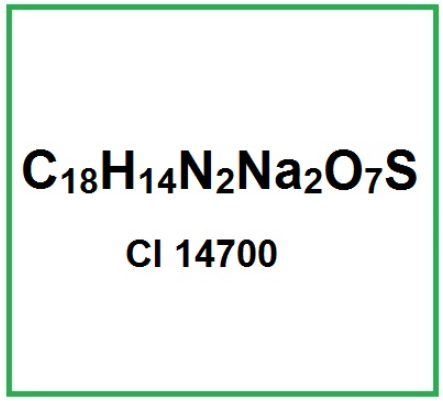Ponceau SX (CI 14700, Red 4, E1224) is a chemical monoazo dye compound that belongs to the family of commercial organic azo dyes.
The dyes are divided into two categories:
- natural compounds or additives derived from the natural ingredient
- synthetic chemicals
What it is for and where
Cosmetics
It is a restricted ingredient as IV/18 ( CI 14700) II/1341 (Ponceau SX; CI 14700: when used as a substance in hair dye products) a Relevant Item in the Annexes of the European Cosmetics Regulation 1223/2009.
It appears in the form of a red powder.

Safety
Azo dyes, and among them CI 14700 or Ponceau sx, are widely used by the textile, paper and food industries and also in research laboratories. When these compounds enter the body through ingestion, they are metabolised into aromatic amines by intestinal microorganisms. A wide variety of anaerobic bacteria have the ability to cleave the azo bond to produce aromatic amines. This reducing activity of azo dyes are, however, influenced by various dietary factors (1).
Ponceau sx was found to be carcinogenic in hamsters, but not in rats (2).
Since intestinal cancer is more common in industrialised countries, a possible connection may exist between the increase in the number of cancer cases and the use of azo dyes. Azo dyes can be reduced to aromatic amines by intestinal microflora (3).
Molecular Formula C18H14N2Na2O7S2
Molecular Weight 480.42
CAS :4548-53-2
Synonyms
- Red 4
- Ponceau SX
- E124
- C.I. Food Red 1
- C.I. Food Red 1, disodium salt
- FD and C Red No. 4
- Dye FD and C Red No. 4
- Food red 1
- Ponceau SX Lake
- 4R purple
- Crimson 4R
- EINECS 224-909-9
- 2-(6-Sulfo-2,4-xylylazo)-1-naphthol-4-sulfonic acid, disodium salt
- 4-Hydroxy-3-(2,4-dimet hyl-5-sulfophenylazo)-1-naphthalenesulfonic acid disodium salt
- disodium 3-[(2,4-dimethyl-5-sulfonatophenyl)hydrazinylidene]-4-oxonaphthalene-1-sulfonate
References____________________________________________________________________
(1) Chung KT, Stevens SE Jr, Cerniglia CE. The reduction of azo dyes by the intestinal microflora. Crit Rev Microbiol. 1992;18(3):175-90. doi: 10.3109/10408419209114557.
(2) Kornbrust DJ, Barfknecht TR. Comparison of 7 azo dyes and their azo reduction products in the rat and hamster hepatocyte primary culture/DNA-repair assays. Mutat Res. 1984 Jun;136(3):255-66. doi: 10.1016/0165-1218(84)90059-4.
(3) Chung KT. The significance of azo-reduction in the mutagenesis and carcinogenesis of azo dyes. Mutat Res. 1983 Apr;114(3):269-81. doi: 10.1016/0165-1110(83)90035-0.
![]() Ponceau SX
Ponceau SX 


